Ridley Scott’s ‘Napoleon’ has become the anticipated movie of the year. The film stars Oscar-winner Joaquin Phoenix and was shot by the legendary cinematographer and Ridley’s cinematic partner, Dariusz Adam Wolski. The movie contains mighty action sequences. As stated by the acclaimed director, the fight scenes were composed of 300 men, 100 horses, and 11 cameras.
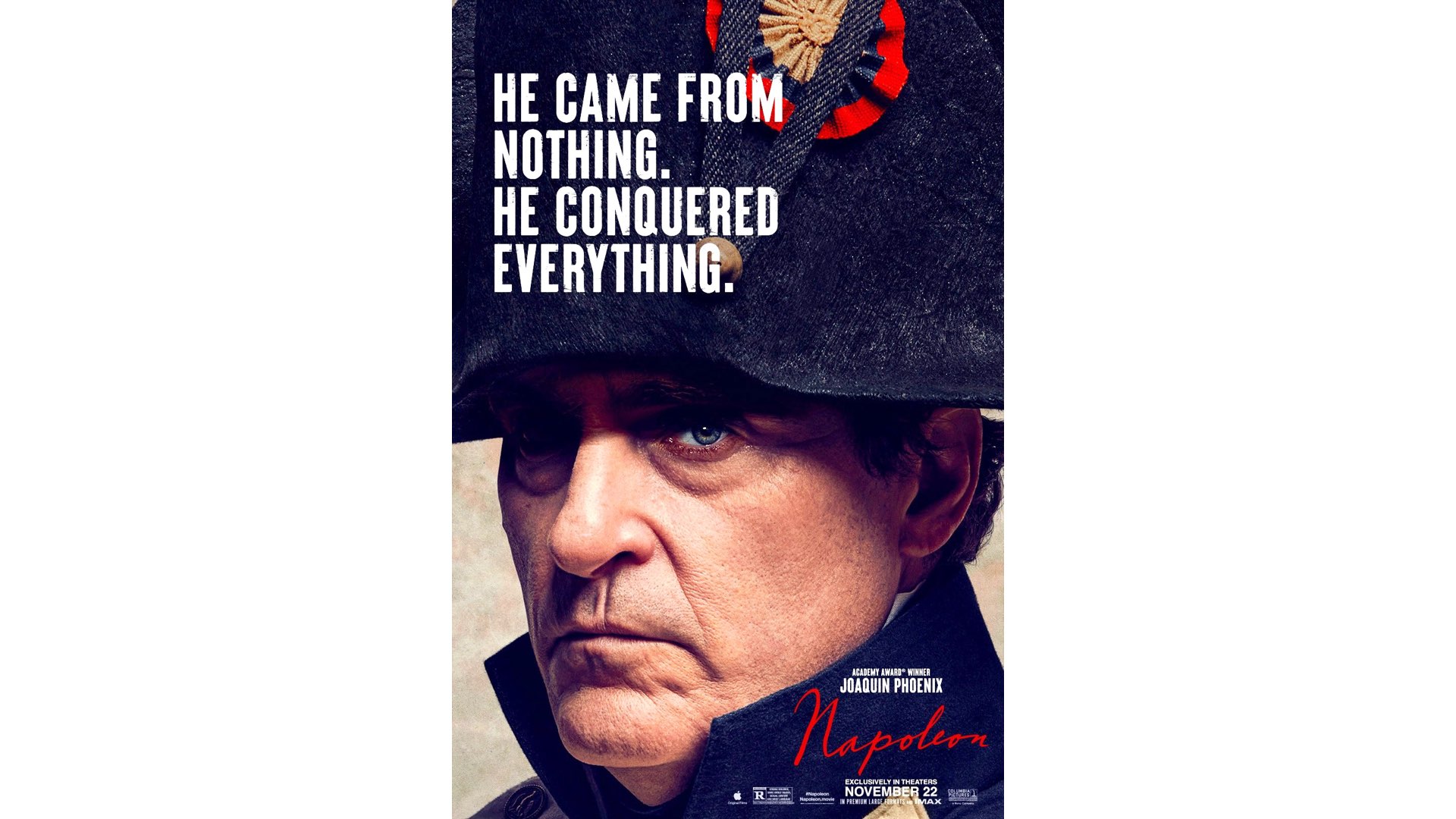
Napoleon: Ultra-complex practical battle sequences
Napoleon is an upcoming epic historical drama film directed and produced by Ridley Scott. Based on the true story of Napoleon Bonaparte, the film stars Oscar winner Joaquin Phoenix, who is also a producer. The movie contains some of the most dynamic battle sequences ever filmed. According to Ridley Scott, there are six spectacular highly detailed practical battles, meticulously prepared, directed, and filmed. One battle was crafted by more than 300 Men, 100 Horses, and 11 Cameras. Scott defines it as ‘Real Filmmaking’. Explore the short video below which gives a taste of the making of the battle sequences:
Moreover, Scott added to Collider: “By having 11 to 14 cameras, we shot Napoleon in 62 days. I’m doing Gladiator 2 now in 54 days, because I’m not doing 50 takes with one camera, on one shot, and then turning around. This normal fight scene could take anything up to a month, I’ll take six days”. Napoleon is scheduled to be released in the United States and the United Kingdom on November 22, 2023, by Sony Pictures Releasing, before streaming on Apple TV+ at a later date. Check out the trailer below:
Shot by Dariusz Adam Wolski ASC
Napoleon was shot by Polish cinematographer Dariusz Adam Wolski, who is also Ridley’s cinematic partner. Wolski (1956) is a Polish film and music video cinematographer. Many of his collaborations include working with film directors like Rob Marshall, Tony Scott, Gore Verbinski, and Tim Burton. He has been a member of the American Society of Cinematographers since 1996 and a member of the Academy of Motion Picture Arts and Sciences since 2004. Wolski has worked on several music videos with artists such as Elton John, Eminem, David Bowie, Sting, Aerosmith, and Neil Young. Here are a few well-known projects shot by him: Crimson Tide (Nominated for the ASC Award for Best Cinematography), Pirates of the Caribbean, Prometheus, Alien: Covenant, Sicario: Day of the Soldado, and more. Wolski is a legend for his fine-tuned imagery and sharp storytelling style through the lens. Napoleon would be no different.
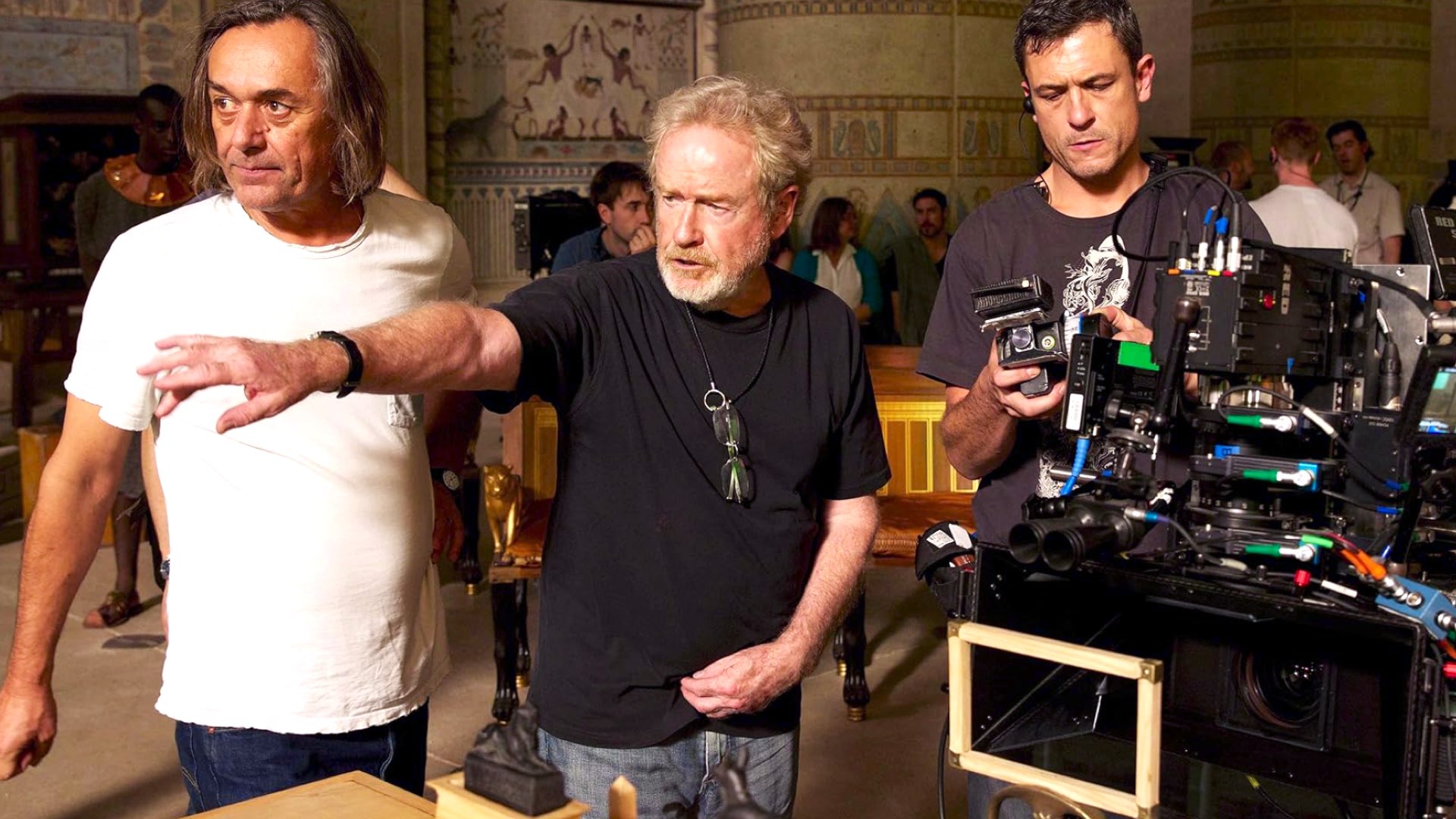
Wolski + Scott = Outstanding cinematography
The combination of Scott and Wolski promises us the best of the best big-screen imagery, especially in the battle scenes. As stated by Scott in an interview held by Entertainment “My team does marvelous military costumes like I’ve never seen before. The costumes are mind-blowing, and I have a military expert for cause-and-effect battle sequences. That’s all coordinated. I plan it, in a funny kind of way, a little bit like a battle. When you do a film like this, you have to have all your department heads edge around the table regularly. We have meetings once a week, and we go page by page”. Furthermore, Scott said that he filmed the battle like Napoleon would pan it. Moreover, there’s no confirmed info regarding the camera used. According to IMDB, Tech Spec the camera is ARRI ALEXA Mini LF, paired with Panavision Vintage 65, Panaspeed, and Angenieux Type EZ-1 & EZ-2 Lenses. However, judging by the BTS pictures, the crew utilized bigger cameras (ALEXA LF/65, or Sony VENICE). Feel free to throw us an email in case you are sure what the cameras Scott used for Napoleon.
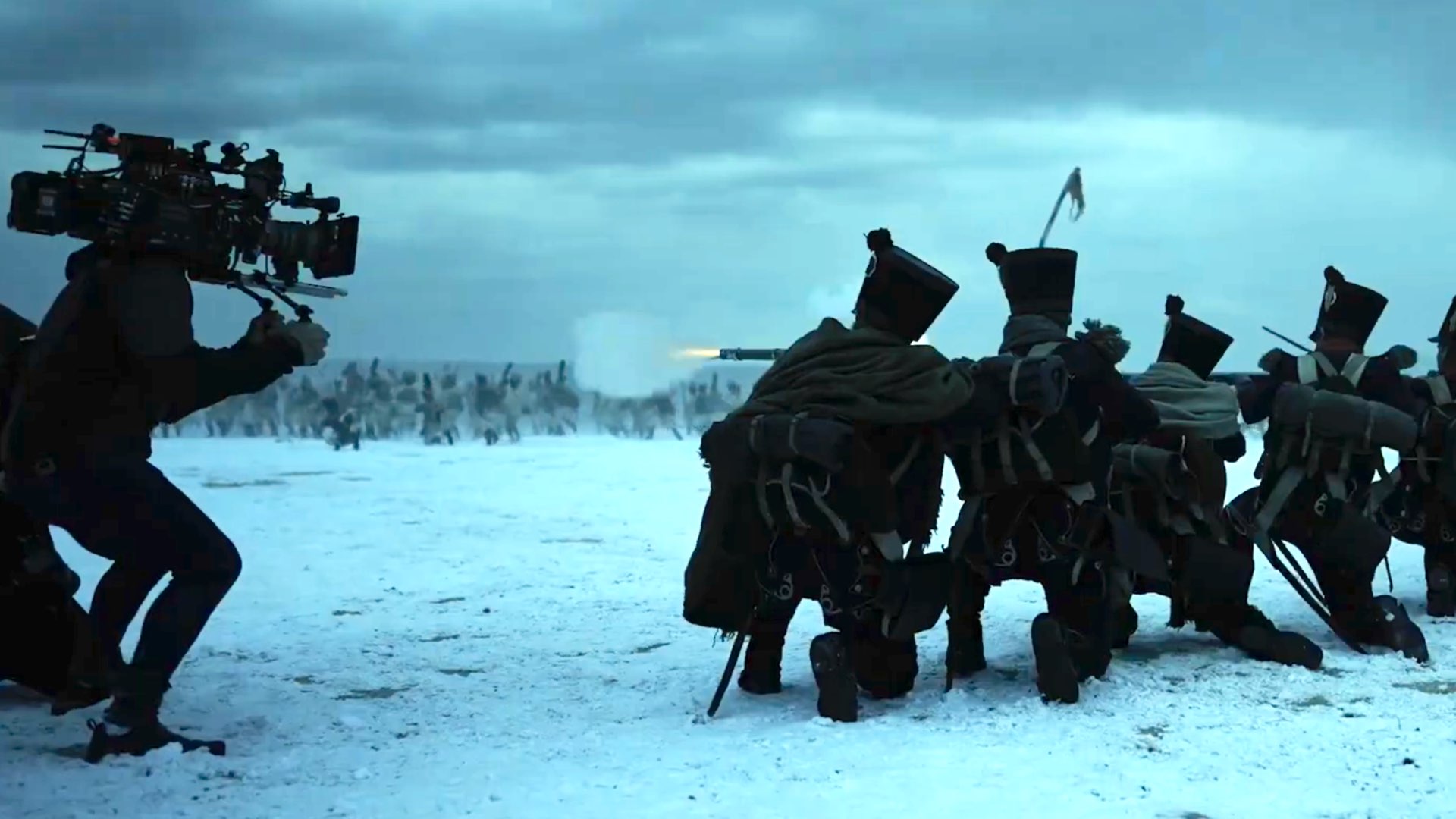
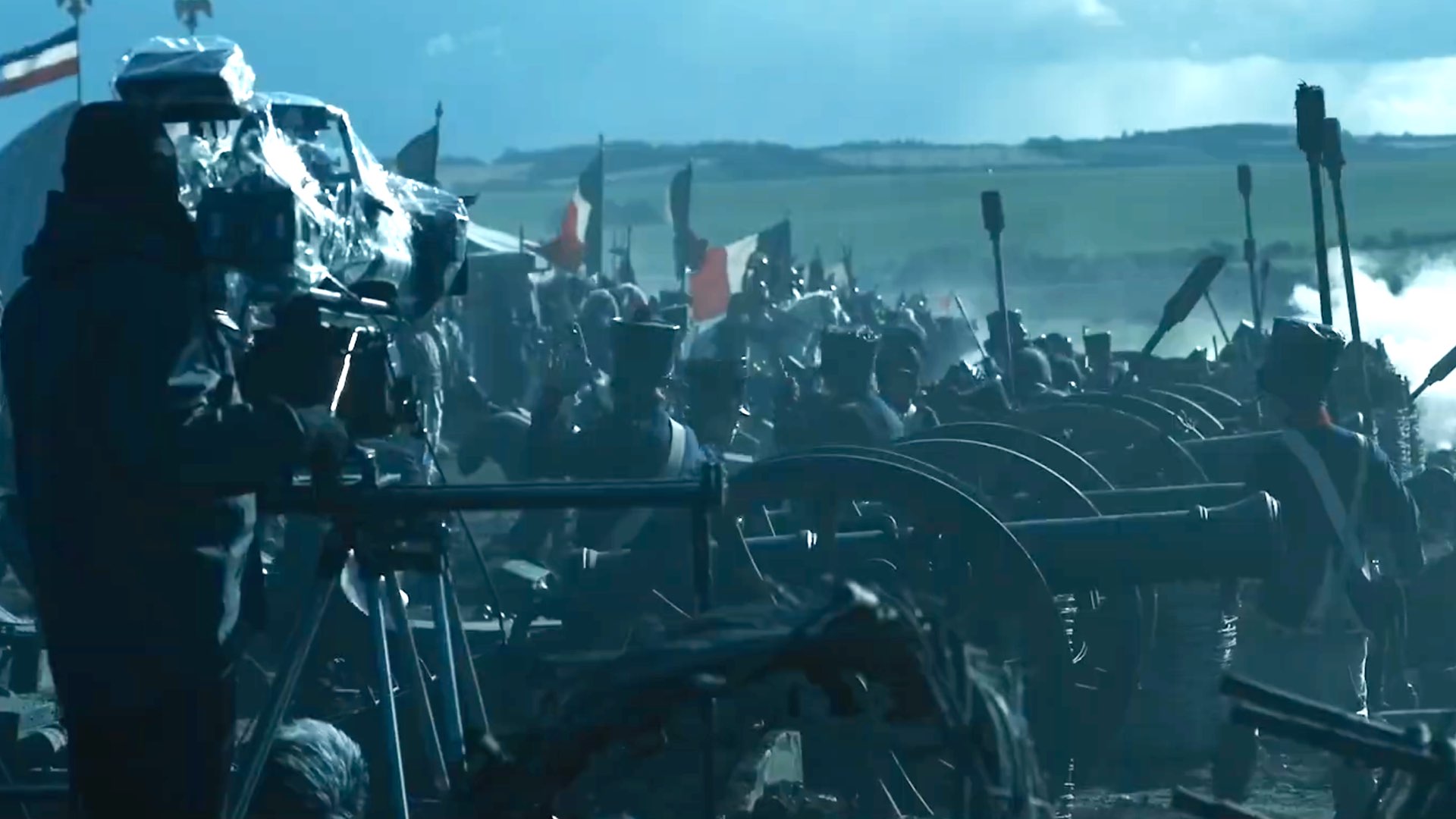
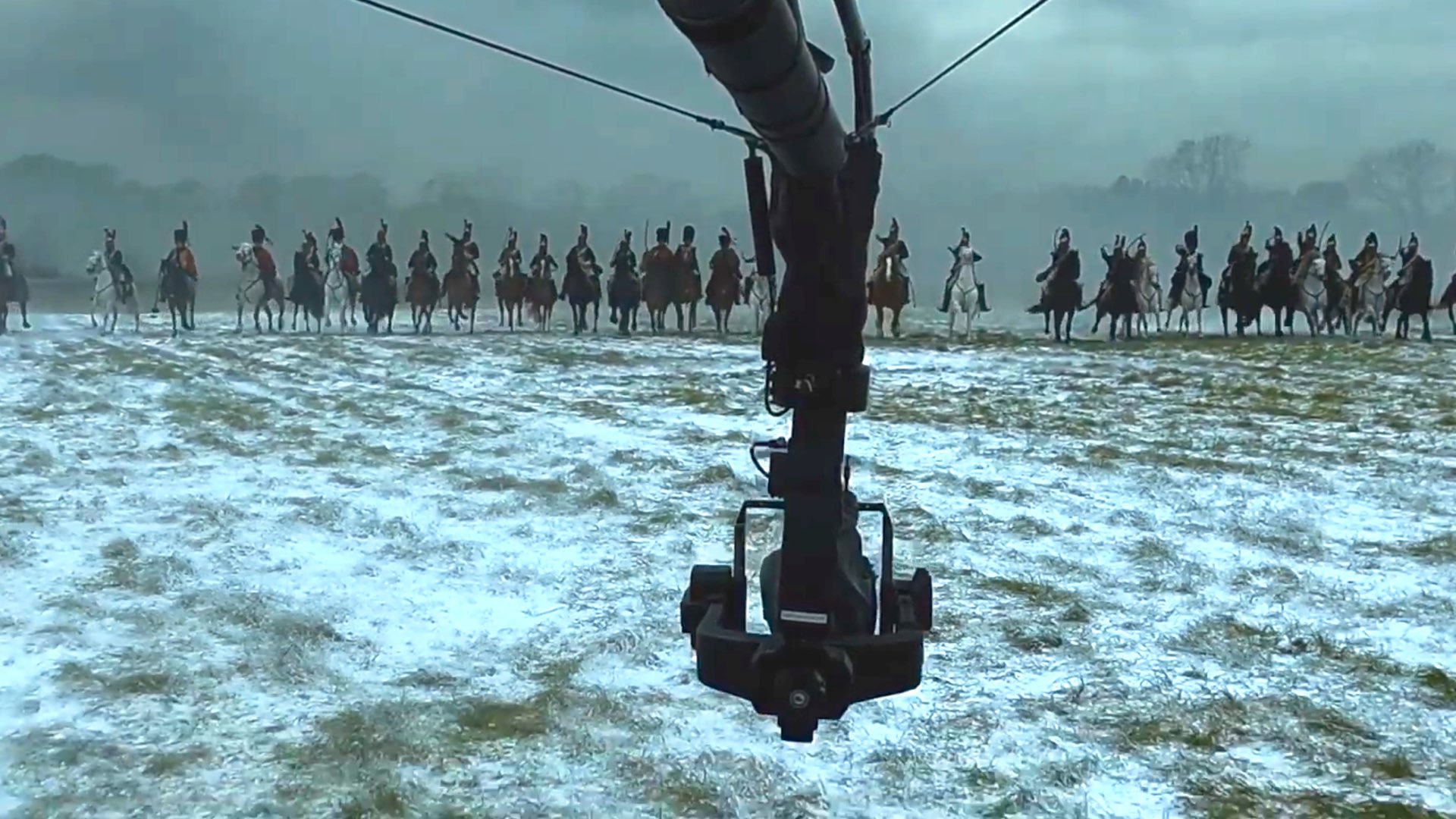
Napoleon: To be released in 70mm
It has been confirmed that Napoleon will be released in 70mm and IMAX formats. Obviously, Ridley Scott’s ‘Napoleon’ will be released in IMAX. But the 70mm release is very intriguing. Although the film was shot on an IMAX-certified digital camera (it’s 100% digital), it’s supposed to look better when projected via celluloid. Generally speaking, film projections look better as they have added depth compared to digital. In that case, the movie goes through post-production image adjustments that don’t technically add any new detail, but make it look better. It reminds us of another glorious project, that is Dune. The movie was shot digitally (on the ARRI ALEXA LF and Mini LF), then was transferred to 35mm film, and then scanned back to digital. All that to create the most accurate emulation possible, reducing the digital sharpness, and elevating softness. That is a different process, as in Dune there was no film projection. Hence, the 70mm projection that will be made for Napoleon, promises an artistic and authentic ‘film look’. Of course, the best option was to shoot Napoleon with IMAX film cameras and project it on IMAX 70mm projectors, just like Nolan’s Oppenheimer. But again, they have decided to go digital. Thus, shooting 100% digital and projecting in 70mm might be a smart strategy to enhance imagery, especially in films like Napoleon. Anyway, we’ll keep you posted when we get more details about this methodology. Stay tuned.


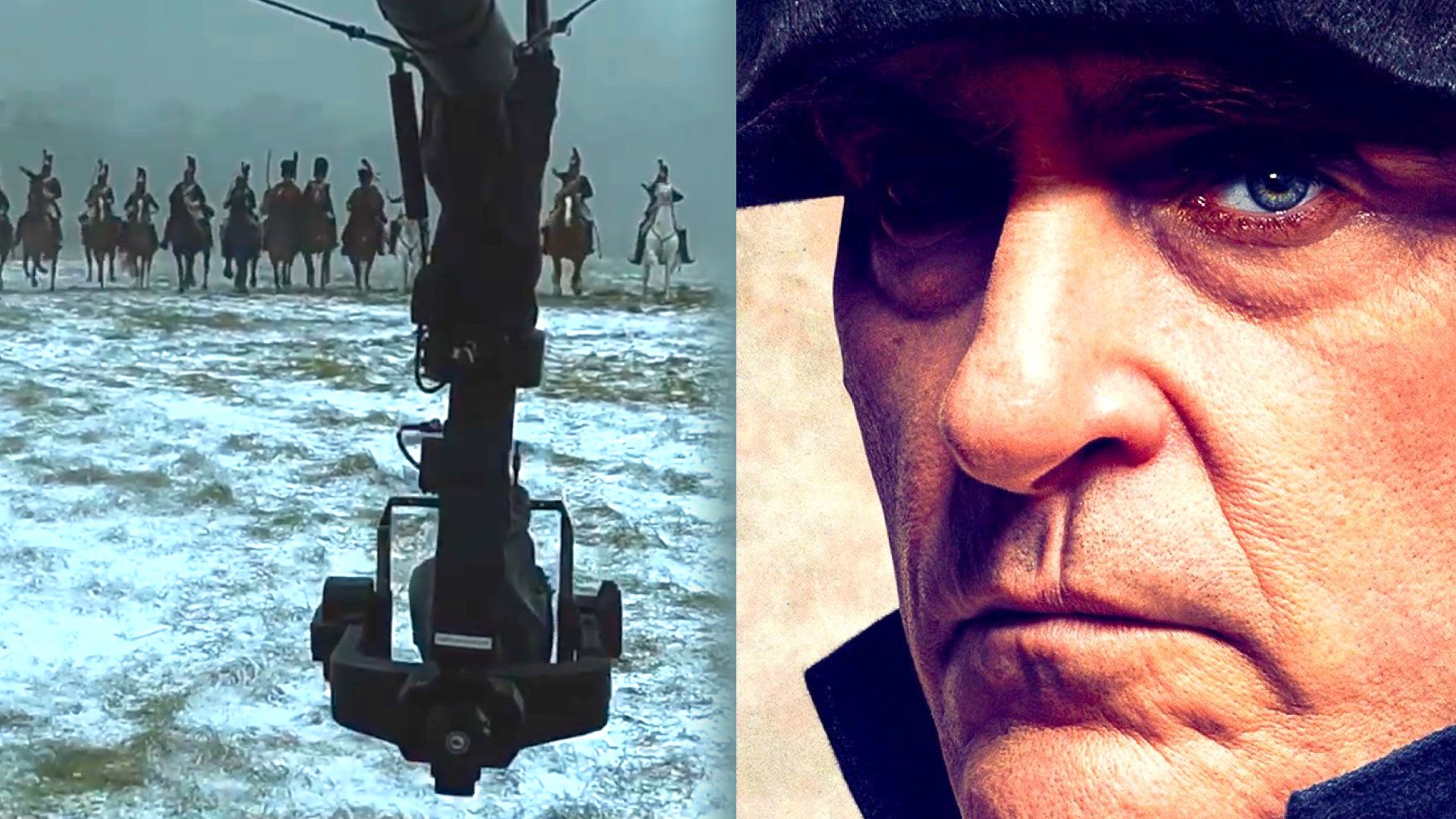




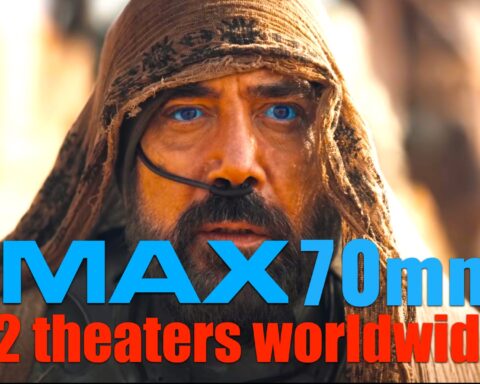
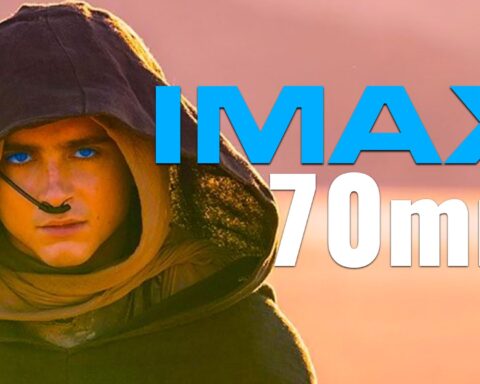


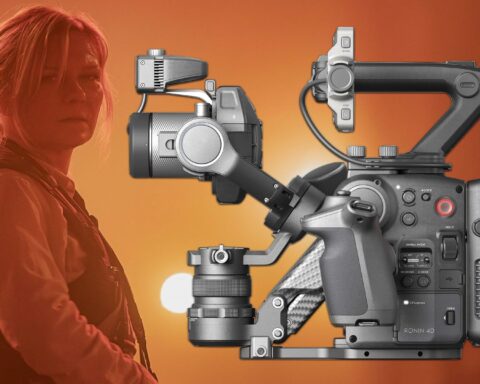



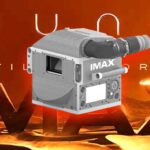
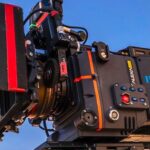
If Scott was intent on shooting with a dozen cameras simultaneously, he couldn’t have used IMAX film cameras because there probably aren’t that many in the world.